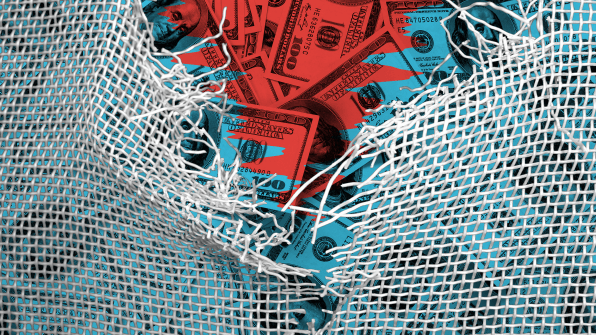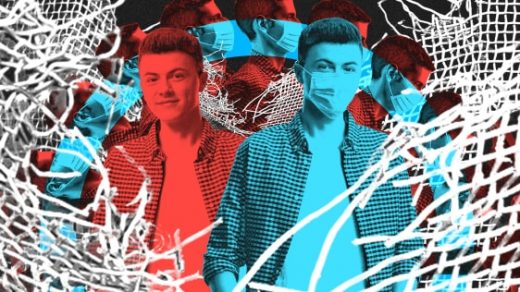COVID-19 deniers are still all too real. Here’s how we can convince them
With months to go before a vaccine is widely deployed, there’s still time to change minds and save lives that would otherwise be lost to COVID-19 denial. But how?
“There’s no silver bullet,” admits Brendan J. Nyhan, a professor of government at Dartmouth College. However, we do know that people emulate the behavior of people they admire. And we might be able to use that phenomenon to counter misinformation.
“When Donald Trump wore a mask, that actually seemed to move the needle with people who seemed skeptical,” Nyhan points out.
Lisa Feldman Barrett, a distinguished professor of psychology at Northeastern University, the chief science officer of the Center for Law, Brain & Behavior at Harvard University, and now the author of Seven and a Half Lessons About the Brain, agrees. She speculates a solution on a grand scale: We need the most highly coordinated influencer campaign in history to stop COVID-19 in its tracks.
How we know what’s real
When you look at the earth around you, perhaps you see an empirically measurable world, ruled by the laws of physics and biology, that’s shared by everyone on this planet. But that’s only half the story. As Barrett explains, citing philosopher John Searle, each of us is actually experiencing two realities all the time.
The first is the physical reality: Dirt. Oxygen. Skin tone. The second is a social reality: Country borders. Air rights. Race.
Social realities are the world, not as it naturally is, but as we construct it through a shared point of view.

“The iconic example is money,” says Barrett. “Little pieces of paper have value for material goods because we all believe little pieces of paper have values. If some larger group of people withdrew that consent, paper wouldn’t have that value.” So green paper is physical reality; cash that can be traded for a house or a hamburger is a social reality. “We kind of make shit up, and all agree it’s real, and then it becomes real,” Barrett summarizes. And that’s dangerous when you have a lot of influential people making things up about COVID-19.
Right now, Republicans in particular seem to be suffering under the illusion of social realities. You see it in the continual denial of climate change. A recent study in Florida found that Republicans were less likely to believe their coastline would flood than Democrats, even when presented with clear maps and scientific measurements of sea rise. During COVID-19, cellphone tracking data has found that Republicans have been less likely to quarantine.
“What happens when you have a social reality that is in direct opposition to physical reality? ‘I’m not going to wear a mask because I’m an individual and I have rights. I can make my own decisions, and this is a plot by the government,’” says Barrett. “That’s a social reality that’s ignoring physical reality, in the sense that it doesn’t matter if you believe a virus is a plot or not, because if the virus is there it’s very real. All the virus cares about is you have a nice, wet set of lungs.”
So what can we do to fix social realities?
We know where these misbeliefs come from because scientists understand how we learn: from the people around us, through both language and mimicking behavior. But we don’t value what everyone says equally. We model people who we admire—our parents, political figures, and celebrities. Prestige makes a difference.
“Especially credible or unlikely messengers are powerful. That’s why it’s really important to have more Republican governors [who were previously] skeptical about public health measures, speaking out [in support],” says Nyhan. “And why it’s really dangerous, conversely, to see a lot of the Fox News opinion machinery turning public health measures into identity politics. It’s not that there’s a risk to public health and that thousands of people are going to die in the coming weeks and months, but that it’s a ‘war on Thanksgiving.’”
Can some updated messaging change hearts and minds this deep into the pandemic? Evidence suggests, yes.
In 2016, Princeton researcher Elizabeth Paluck led a study across 56 middle schools in New Jersey that had significant issues with bullying. Her team was able to reduce conflicts by an incredible 30% within a year. How? They didn’t try to change everyone’s minds about bullying. Instead, they targeted the tastemakers, the popular or influential students in the schools, and encouraged them to post about the dangers of bullying on Instagram, wear bracelets for the cause, and speak to other students about better means of conflict resolution.
Leveraging a handful of influencers—the people we model to learn and create social realities—researchers were able to quantifiably reduce bullying across dozens of schools.
Barrett cites this research and believes that America needs to duplicate it, albeit on a much larger scale, to get people to believe in the dangers of COVID-19, wear masks, and actually take the vaccine when it’s available so that we can put this pandemic behind us. But picking out a few popular kids in a high school is easy. How do you do that on the scale of America itself?
“We have brilliant marketers in this country. Imagine what would happen if you had the people who market things for Apple, or the products we feel like we can’t do without, and you put them on the job to come up with campaigns to give to the influencers who are widespread?” muses Barrett. “Could that turn the tide against the naysayers?”
We’d need politicians. Celebrities. Micro-influencers. And, yes, members of the conservative-leaning media. Barrett imagines a coordinated movement, with a simple, unified message, in which all of these different power brokers actually demonstrate themselves social distancing, wearing a mask, and taking a vaccine.
This kind of marketing campaign could create a new social reality for COVID-19 deniers, one that’s in line with physical reality.
“People will copy people they admire,” says Barrett. “If you and I were in the same room, even if we didn’t know each other—if we like and trust each other—by the end of a 30-minute conversation, we’d mirror each other’s actions. It just happens. We can harness that on a large scale.”
(46)



